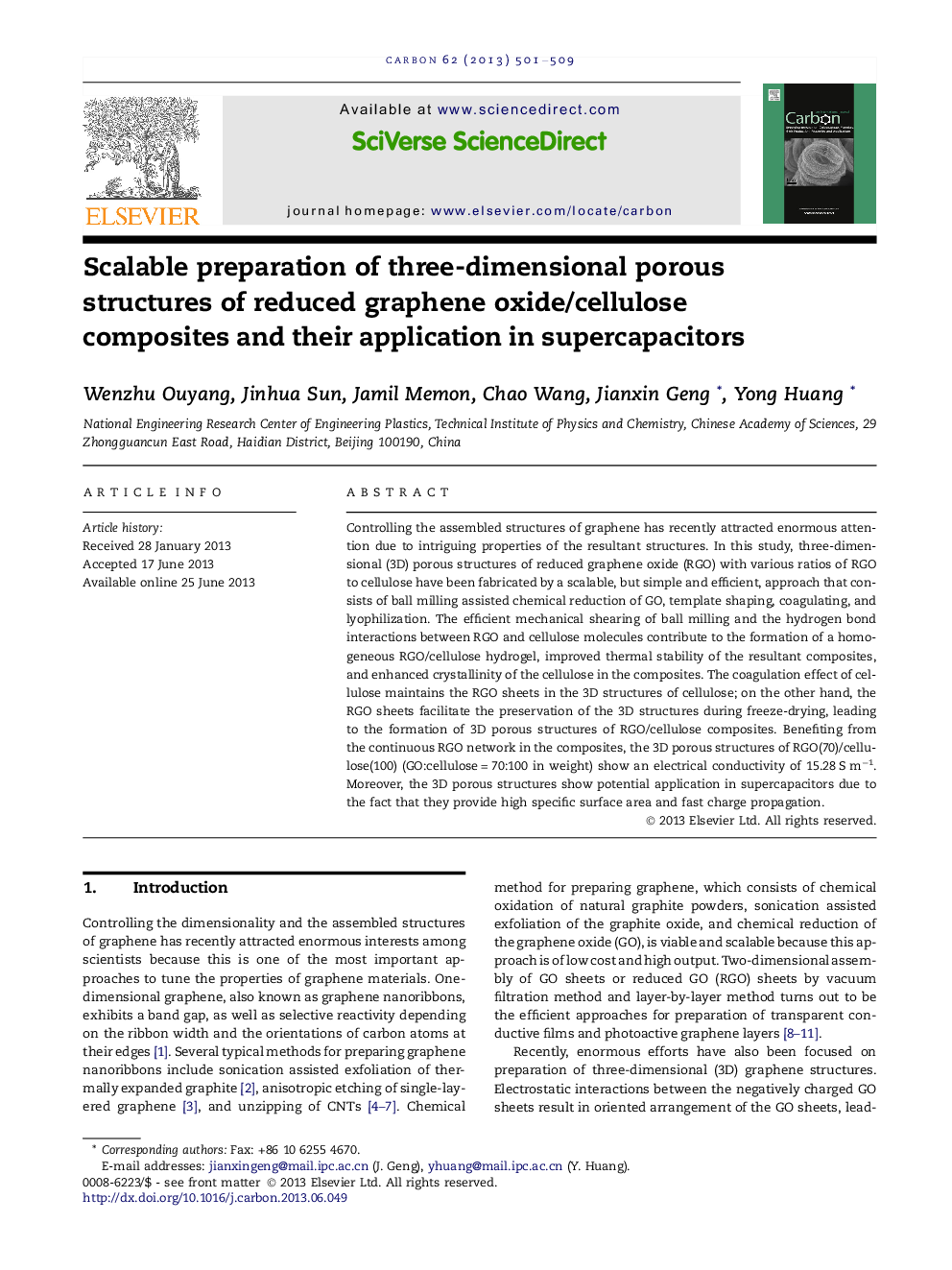| Article ID | Journal | Published Year | Pages | File Type |
|---|---|---|---|---|
| 1414046 | Carbon | 2013 | 9 Pages |
Controlling the assembled structures of graphene has recently attracted enormous attention due to intriguing properties of the resultant structures. In this study, three-dimensional (3D) porous structures of reduced graphene oxide (RGO) with various ratios of RGO to cellulose have been fabricated by a scalable, but simple and efficient, approach that consists of ball milling assisted chemical reduction of GO, template shaping, coagulating, and lyophilization. The efficient mechanical shearing of ball milling and the hydrogen bond interactions between RGO and cellulose molecules contribute to the formation of a homogeneous RGO/cellulose hydrogel, improved thermal stability of the resultant composites, and enhanced crystallinity of the cellulose in the composites. The coagulation effect of cellulose maintains the RGO sheets in the 3D structures of cellulose; on the other hand, the RGO sheets facilitate the preservation of the 3D structures during freeze-drying, leading to the formation of 3D porous structures of RGO/cellulose composites. Benefiting from the continuous RGO network in the composites, the 3D porous structures of RGO(70)/cellulose(100) (GO:cellulose = 70:100 in weight) show an electrical conductivity of 15.28 S m−1. Moreover, the 3D porous structures show potential application in supercapacitors due to the fact that they provide high specific surface area and fast charge propagation.
